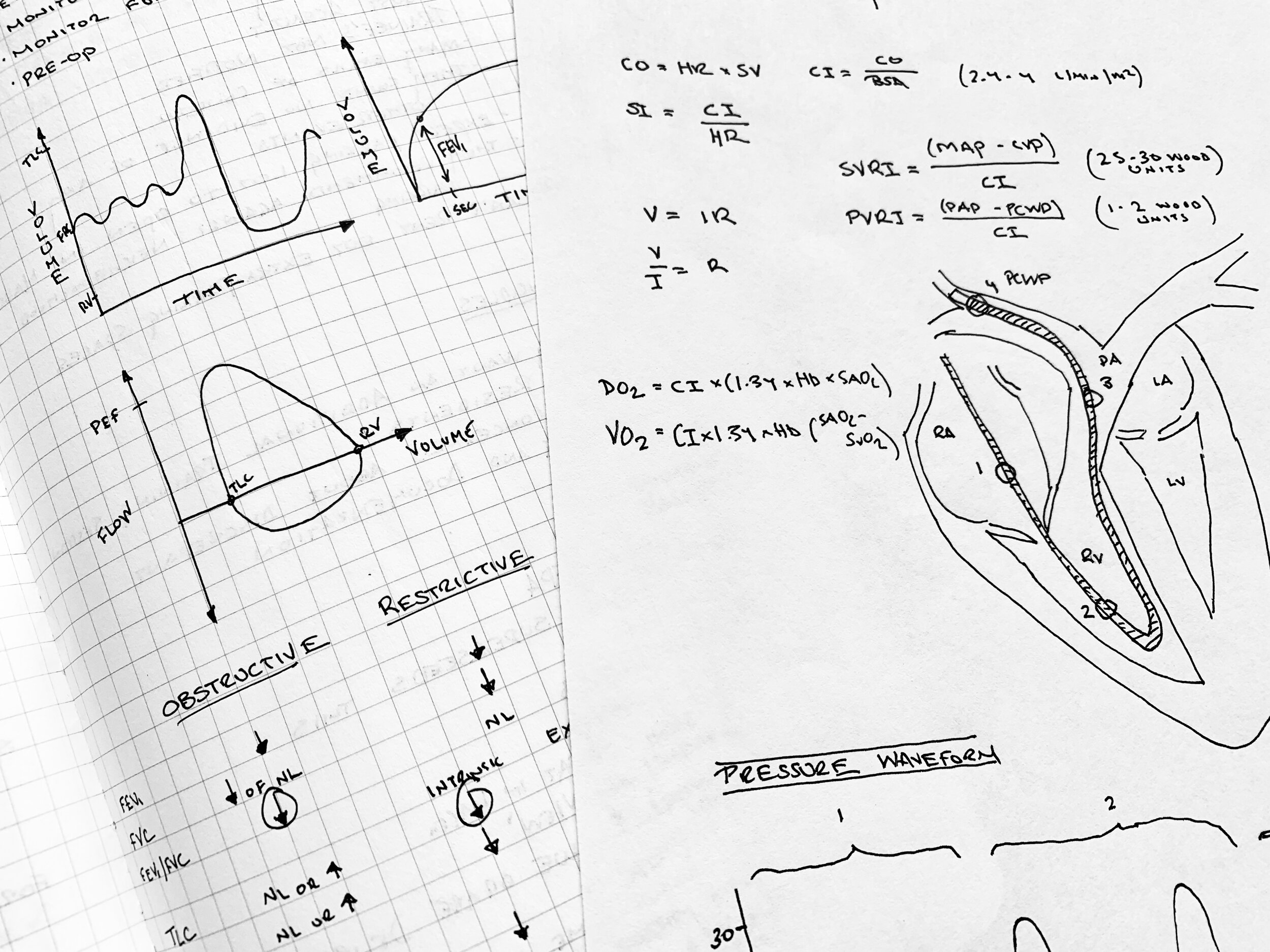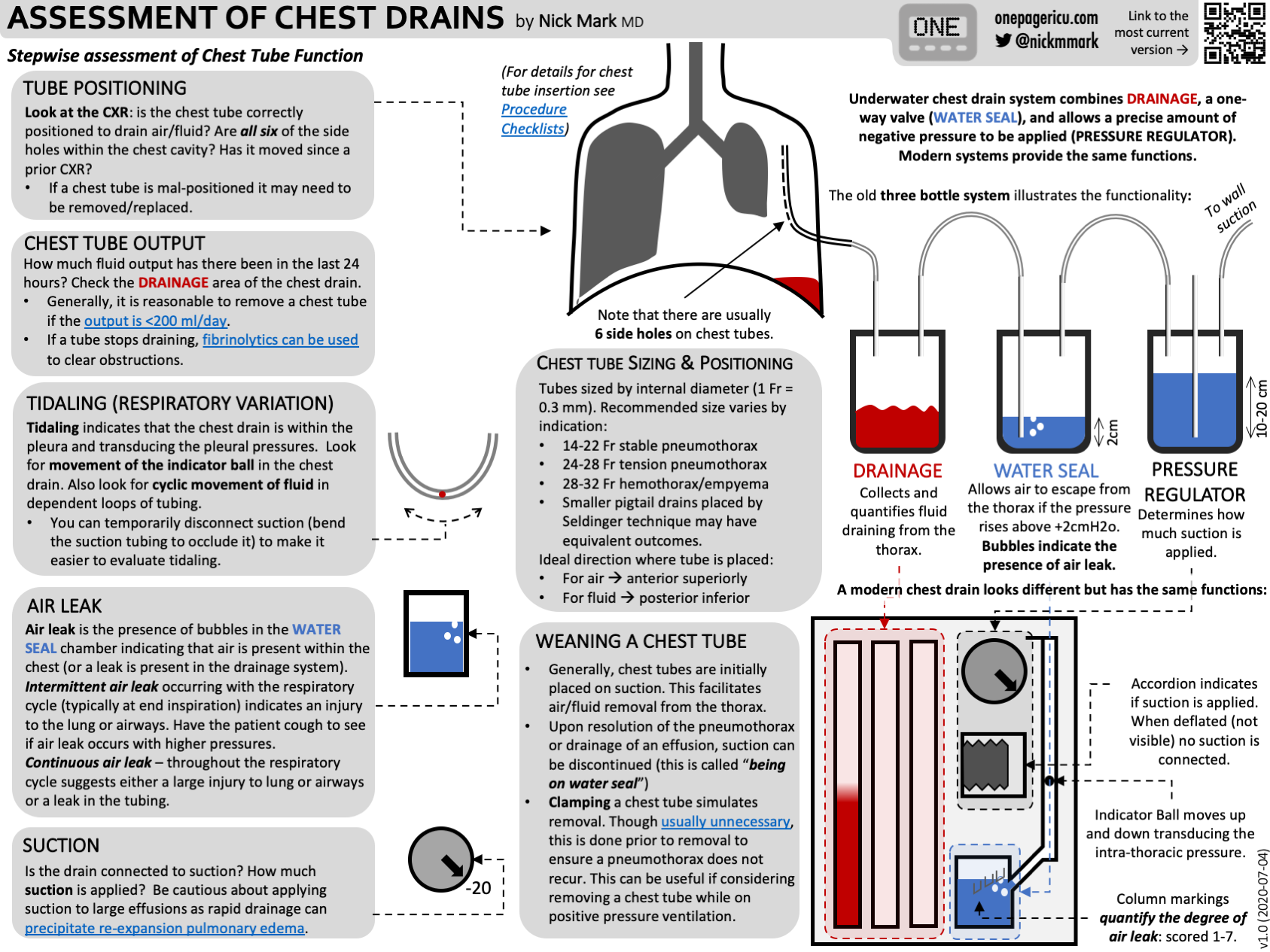
Critical care education one page at a time. Simple, free, & open source.
Nick Mark’s OnePager guides to critical care topics.
Pleural Manometry
#criticalCare #pulmonary #effusions #thoracentesis
Thoracentesis can rapidly relieve dyspnea, but not every thoracentesis goes according to plan. Pleural manometry can help identify lung pathologies like entrapped lung and trapped lung, and may even predict response to pleurodesis and likelihood of re-expansion pulmonary edema. This #OnePager explains the principles of pleural manometry and pleural elastance and shows you how to interpret the results.
Current version 1.0 (2020-08-15)
-
Elastance of the pleural space: a predictor for the outcome of pleurodesis in patients with malignant pleural effusion, Annals of Internal Medicine 1997
Measurement of Pleural Pressure during Therapeutic Thoracentesis, AJRCCM 2000
Pleural manometry: technique and clinical implications, CHEST 2004
Pleural manometry in pleural effusion, Egyptian Journal of Chest Diseases and Tuberculosis 2016
Should manometry be routinely used during thoracentesis? Yes, but not without some basic physiologic understanding! Expert Review of Pulmonary Medicine 2016
Pleural manometry: Relevance in today's practice, Lung India 2016
Pleural manometry: techniques, applications, and pitfalls, Journal of Thoracic Disease 2020
-
-
None… yet!
-
Current version 1.0 (2020-08-15)
-





